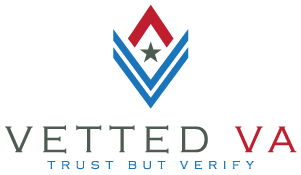Sometimes, a VA borrower does everything right — good credit, stable income, strong eligibility — and still hears:
“Sorry, we can’t get you approved.”
But as Vetted VA professional Scott Schang reminds veterans, that denial may say more about the lender’s limitations than your qualifications.
If your lender isn’t experienced with manual underwriting, they might stop at a “Refer” decision from the automated underwriting system (AUS) instead of taking the extra steps that could lead to an approval.
That’s where VA manual underwriting gives you a second chance.
What Happens When Automated Underwriting Says “No”
Most VA lenders use automated underwriting systems like DU (Desktop Underwriter) or LP (Loan Prospector) to evaluate your file. These systems quickly analyze your credit, income, and debt ratios.
If your result is “Approve/Eligible,” you move forward easily.
If it’s “Refer/Eligible,” it means the system can’t issue automatic approval — but the VA allows a manual review by a trained underwriter.
Unfortunately, not all lenders are willing or able to take that next step.
“Many lenders simply don’t manually underwrite VA loans,” Schang said. “That’s not a VA issue — it’s a lender issue.”
What Is VA Manual Underwriting?
Manual underwriting is when a human underwriter reviews your file line by line, following VA Handbook Chapter 4, Section 4 for credit and income analysis.
It’s designed to:
-
Give lenders flexibility when the AUS can’t assess unique situations.
-
Allow compensating factors (like assets, history, or military stability) to strengthen a loan.
-
Ensure veterans aren’t unfairly denied because of software limitations.
Manual underwriting still follows VA’s residual income, DTI, and credit requirements — but it allows for human judgment, context, and verification.
Why Some Lenders Don’t Offer Manual Underwriting
Manual underwriting requires more time, documentation, and skill. It also carries slightly more oversight risk for the lender.
Some mortgage companies, especially online or high-volume shops, avoid it altogether. That’s why borrowers should ask up front:
“Do you manually underwrite VA loans if automated systems can’t approve me?”
If the answer is “no,” consider moving on. A qualified VA-approved lender who offers manual underwriting can often turn a “refer” into a “yes.”
System Overrides and Manual Downgrades Explained
Two terms that often confuse borrowers are system override and manual downgrade.
-
A system override happens when something in your application automatically flags your file for manual review — such as missing data, unverified information, or eligibility concerns.
-
A manual downgrade occurs when new information arises during processing that changes the AUS result from “Approve” to “Refer.”
According to the VA Handbook, this can include:
-
Undocumented credit history or unresolved derogatory items.
-
Inconsistencies in income or employment verification.
-
Ineligibility issues or missing documents.
When this happens, a VA-experienced underwriter can still manually approve the file if compensating factors are strong.
Common Credit Issues That Trigger Manual Review
Even strong borrowers can trigger a manual downgrade for reasons that don’t necessarily indicate financial trouble.
Foreclosure or Deed-in-Lieu
If you’ve had a foreclosure or deed-in-lieu within the past two years, VA generally requires a waiting period. After two years — and with a current Approve/Eligible finding — no additional documentation is required. But if you’re inside that window, a manual review may still allow approval with strong compensating factors.
Mortgage Payment History
Late mortgage payments can also cause a downgrade. For example:
-
More than 1×30 days late on a purchase or rate/term refinance.
-
Any late payments on a cash-out refinance in the past 12 months.
Bankruptcy
If a Chapter 7 bankruptcy was discharged within two years, your loan will be manually underwritten. Less than one year is not eligible. For Chapter 13, VA may consider approval with documented repayment history and trustee permission.
Disputed Accounts
Any disputed credit accounts or public record disputes trigger manual review, since the AUS cannot assess them accurately.
What Are Compensating Factors?
When your loan is manually underwritten, compensating factors help balance any risk areas.
These are positive signs that demonstrate your ability and willingness to repay:
-
Excellent or improving credit history.
-
Conservative use of consumer debt.
-
Stable, long-term employment.
-
Significant cash reserves or liquid assets.
-
Sizable down payment or existing equity.
-
High residual income (more than required by region).
-
Little or no increase in monthly housing costs.
-
Benefits such as disability income or military allowances.
“Compensating factors can’t erase poor credit,” Schang explained, “but they can show that the risk of default is low.”
How to Find a Lender Who Will Fight for Your VA Loan
If you’ve been denied or received a “Refer/Eligible” with no clear explanation, it’s time to ask the right questions:
-
“Are you able to manually underwrite VA loans?”
-
“Do you have VA underwriters trained on Chapter 4 of the VA Handbook?”
-
“Can you explain my AUS findings and help me understand next steps?”
Manual underwriting takes more work for both the borrower and lender, but for veterans who deserve a fair evaluation, it’s worth it.
“Don’t take no for an answer,” Schang said. “Find a lender who’s willing to put in the effort. We’re out here — and we’ll fight for you.”
Final Thoughts: Don’t Take “No” for an Answer
A VA loan denial isn’t always the end of the road. Sometimes, it’s a lender limitation, not a borrower problem.
Manual underwriting exists for a reason — to give veterans a second chance at the home they’ve earned.
If you believe you qualify, connect with a Vetted VA professional trained in VA manual underwriting. With the right team, “no” can quickly turn into “approved.”




